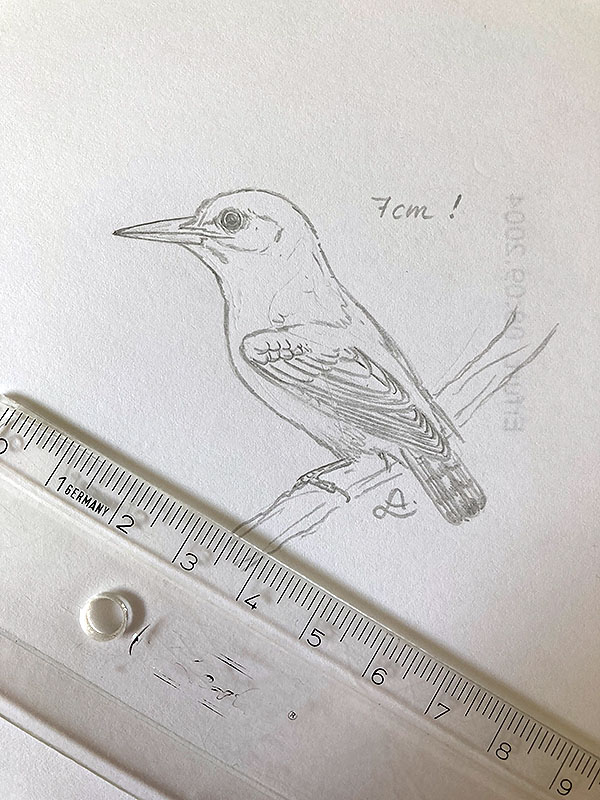
*********************
bearbeitet: 30.05.2022


*********************
bearbeitet: 30.05.2022
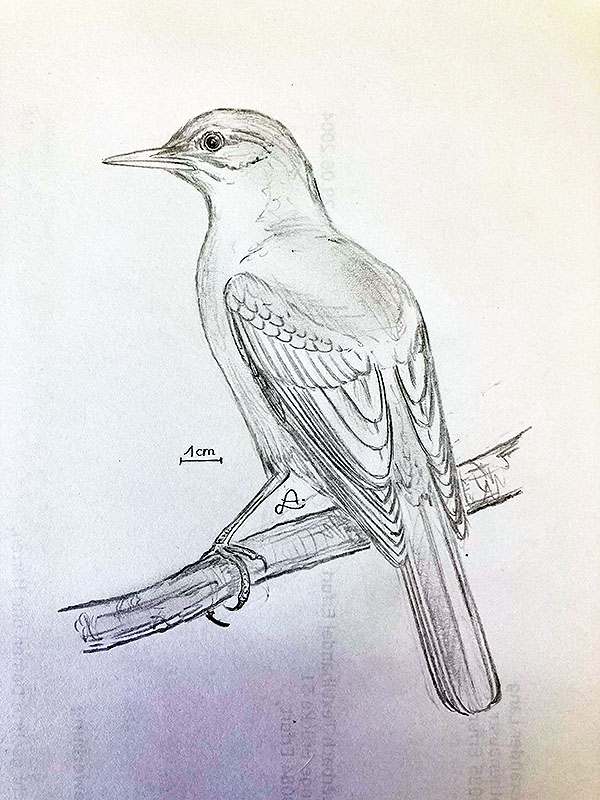
*********************
bearbeitet: 27.05.2022
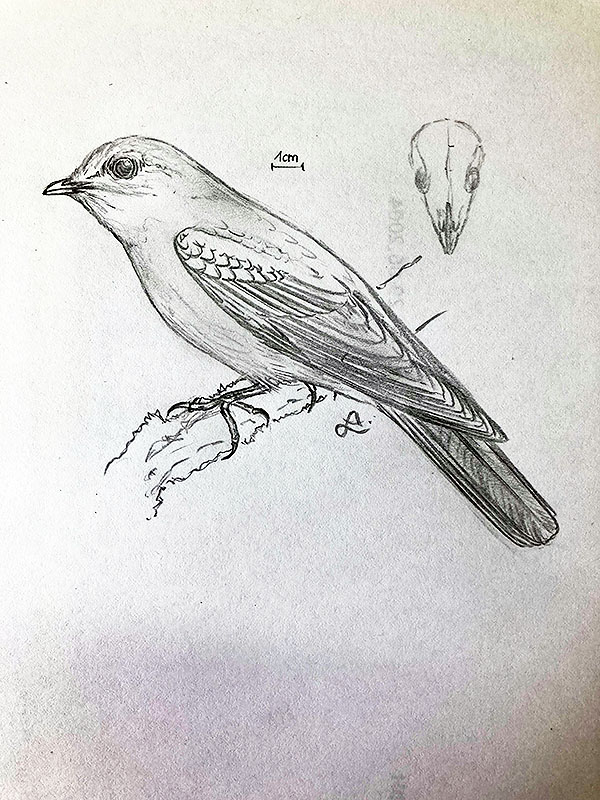
*********************
bearbeitet: 27.05.2022
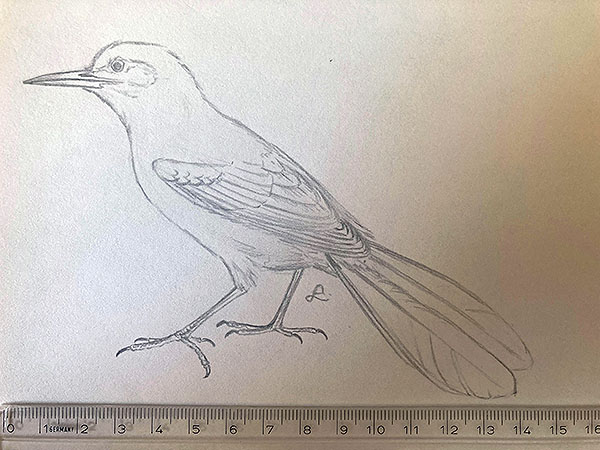
*********************
bearbeitet: 24.05.2022

*********************
bearbeitet: 21.05.2022
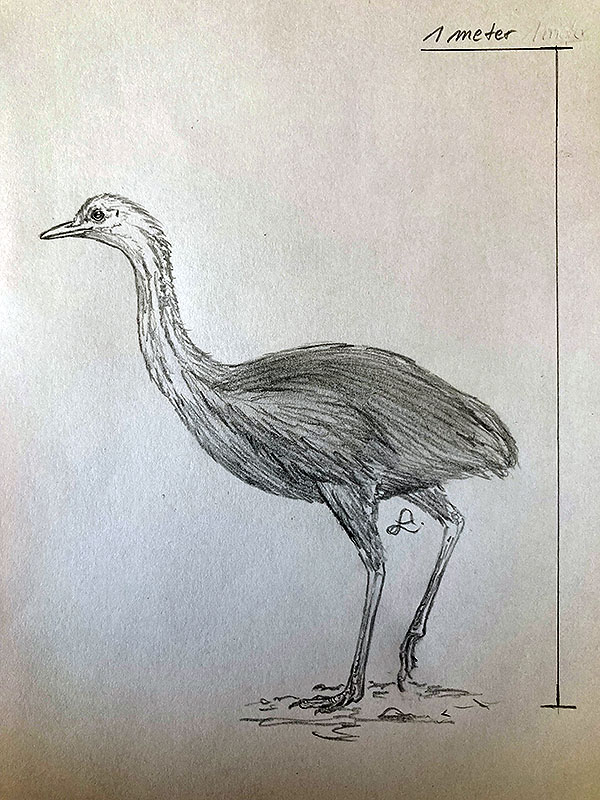
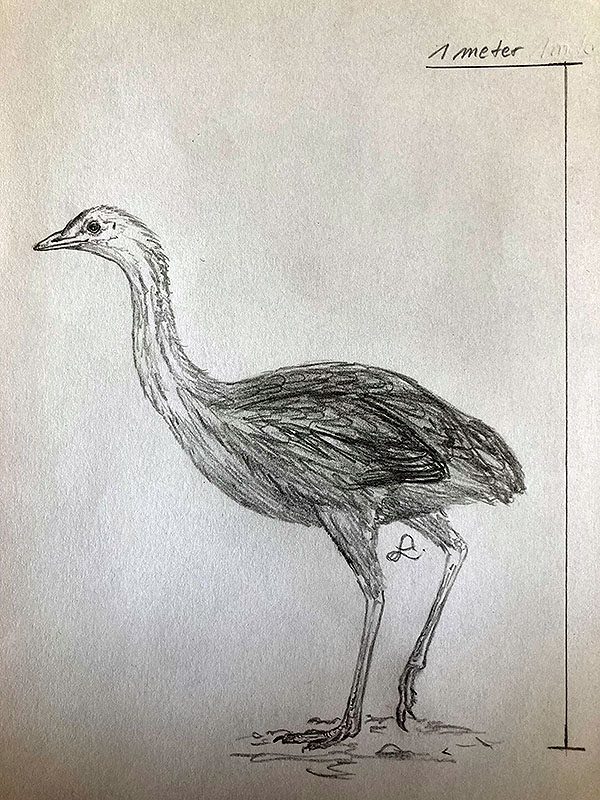
*********************
bearbeitet: 21.05.2022

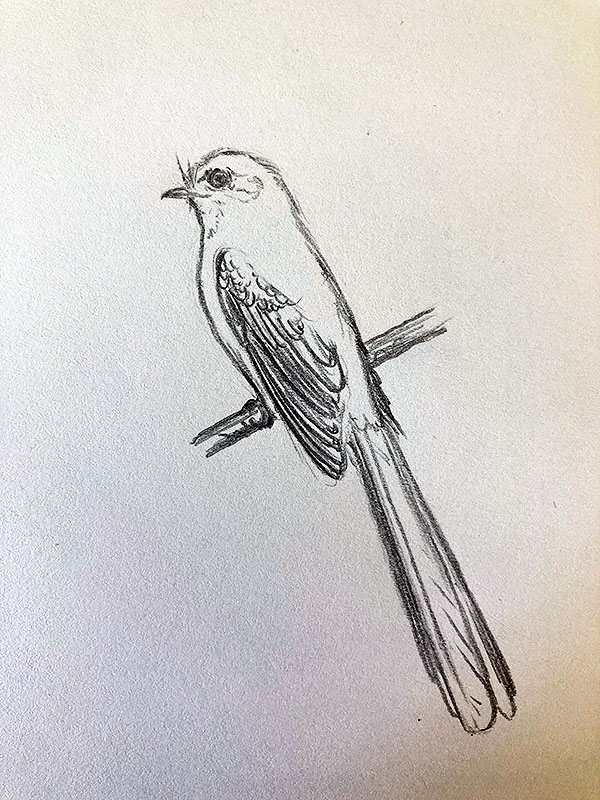
*********************
bearbeitet: 17.05.2022
Aus frühmiozänen (ca. 20 Millionen v.u.Z.) Ablagerungen in Europa, vor allem in Süddeutschland und Österreich sind zahlreiche passerine Vogelformen nachgewiesen, von denen nur wenig Material erhalten geblieben ist.
Leider sind die meisten davon wohl bis jetzt nicht weiter untersucht worden und demnach ist auch nicht näher bekannt, welchen Unterordnungen sie womöglich zuzuordnen sind (aus dem Oligozän, das dem Miozän vorangeht, sind aus Europa nur suboscine Sperlingsvögel (Tyranni) bekannt, die es hier heute überhaupt nicht mehr gibt), deswegen wäre es sehr interessant mehr über all diese fossilen Formen zu erfahren.
Der hier abgebildete Vogel ist nur als “Passerum gen. species A” benannt.
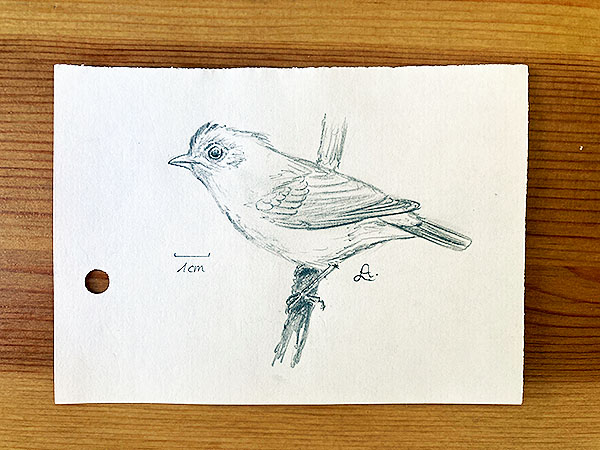
*********************
Quelle:
[1] Peter Ballmann: Die Vögel aus der altburdigalen Spaltenfüllung von Wintershof (West) bei Eichstätt in Bayern. Zitteliana 1: 5-60. 1969
*********************
bearbeitet: 23.03.2022
ausnahmsweise mal kein Vogel …
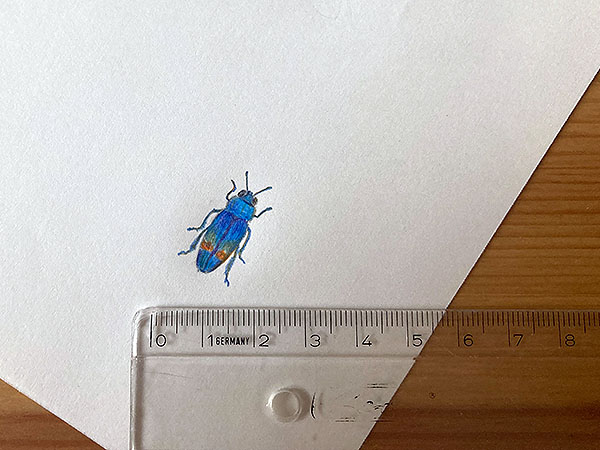
*********************
bearbeitet: 06.03.2022
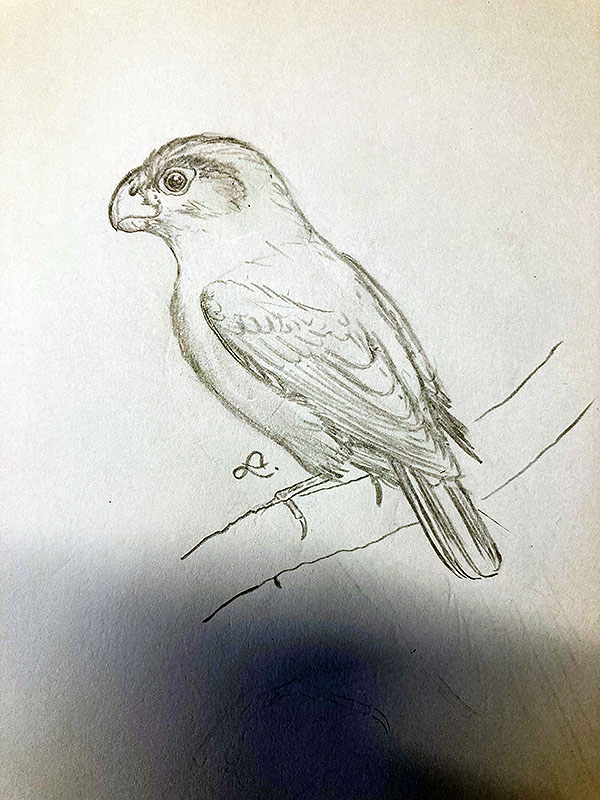
*********************
bearbeitet: 06.03.2022

*********************
bearbeitet: 06.03.2022
In his great blog (that I actually – and that’s no lie – look into at least once a week), Paul Cianfaglione writes about many bird-related things, including fine book reviews, very interesting insights into bird anatomy and everything else.
But his latest post is just unbeatable: he did make an extremely close inspection of a bird fossil from Messel that he owns.:
“Messel Bird Fossil offers unique feather preservation, and more” from January 23, 2019
***
I personally have never seen close-ups of a bird fossil that are so razor-sharp and detailed!
And his bird shows features not known in any living bird – at least not all of them together in one bird.:
The beak is very big and hooked like the beak of a bird of prey or a owl, and it appears to have had sensory pits, the body feathers appear somewhat hair-like, the wing coverts are fluffy, also probably somewhat like the feather edges of recent owls, and the primaries have extremely strange appendages not known in that way from any other bird, living or extinct, but somewhat reminding on the wings of a waxwing.
What kind of a bird was that?
Well, I could try to do a reconstruction, should I?



***
The Avian Musings blog does not longer exist, unfortunately.
*********************
edited: 03.09.2021
During the latest digging campaign in the Messel shale, a new bird fossil was found that has unimaginably well-preserved feathers – even by Messel standards, while the bones themselves are rather crumbly.
***
This bird reaches the size of a recent Great Tit (Parus major L.), it apparently had a short and broad beak and anisodactyl feet.
The feathers are exceptionally well-preserved and distinctly colored: the feathers on the head and neck are greyish brown with reddish brown tips; the rump feathers are dark ashy brown; the primary coverts of the wing are straw yellow, the primaries are reddish brown with a purplish hue; the tail feathers (at least 10) are nearly as long as the primaries, they are straw yellow and have a distinct reddish brown and dark brown stripy pattern not unlike as in recent birds of prey.
These are of course not the original colors of that bird, yet the patterns are! [1]
***
The fossil has only just been found, it hasn’t yet been prepared and has not even a collection number, thus there is not much that can be said about it, however, all in all this form reminds me on Hassiavis laticauda Mayr, a member of the family Archaeotrogonidae from the same locality, but it is of course much smaller and has proportionally less stout arm- and leg bones.
*********************
References:
[1] Georgina Jadikovskaal: Fossil of unknown bird species resembling great tit found during dig at UNESCO site. Zenger News July 12, 2021
*********************

*********************
edited: 09.08.2021
Würde man eine Zeitreise ins miozäne Europa unternehmen, etwa vor 23 bis 16 Millionen Jahren, würde man sich alsbald wundern ob man wirklich noch in Europa ist oder doch in Afrika; zahlreiche der heute nur noch in Afrika vorkommenden Vogelfamilien waren damals auch weit nördlich der Sahara zu finden, die Baumhopfe sind eine dieser Vogelfamilien.
Der Kiefernrenner (so die Übersetzung seines wissenschaftlichen Namens) erreichte eine Länge von etwa 20 cm, ansonsten ähnelte die Art wohl weitgehend den heutigen Baumhopfen. [1]
*********************
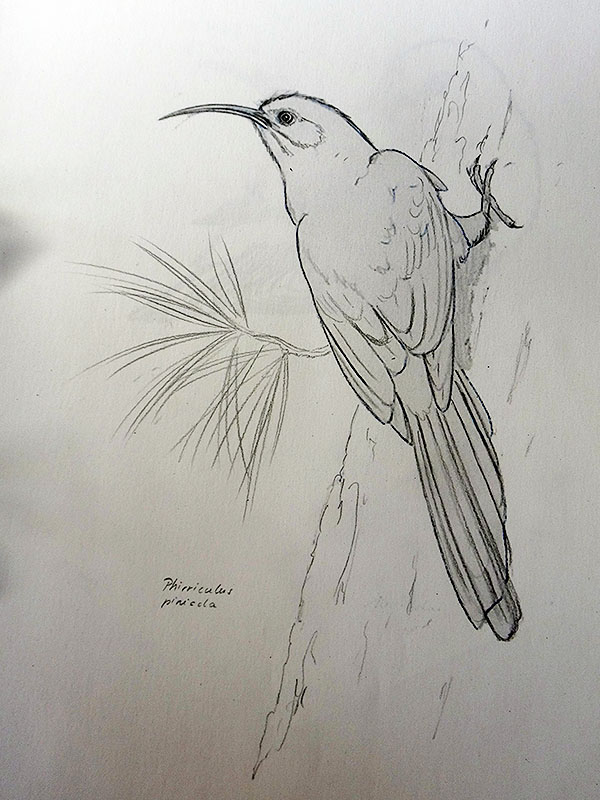
*********************
Quelle:
[1] Jiří Mlíkovský; Ursula B. Göhlich: A new wood-hoopoe (Aves: Phoeniculidae) from the early Miocene of Germany and France. Acta Soc. Zool. Bohem 64: 419-424. 2000
*********************
bearbeitet: 03.04.2021
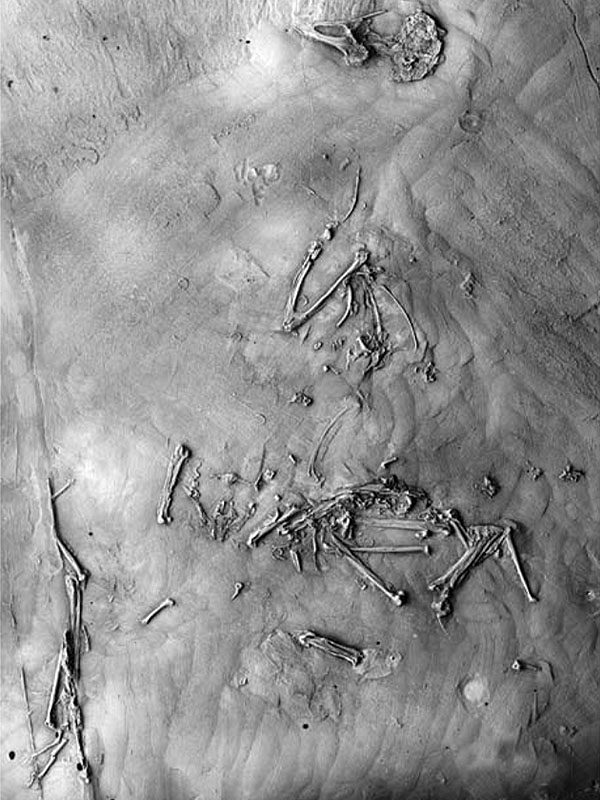

*********************
bearbeitet: 20.01.2021
Diese (nicht mehr ganz so) älteste bekannte Feder stammt mit ziemlich großer Wahrscheinlichkeit von dem weltberühmten Urvogel (Archaeopteryx lithographica von Meyer), der tatsächlich aber gar kein wirklicher Vogel im eigentlichen Sinn des Wortes war – aber dies genauer zu erklären überlasse ich Berufs-Paläoornithologen.

Die Feder, bislang erstaunlicherweise einzigartig geblieben, ist etwa 6 cm lang, sie war ziemlich wahrscheinlich sehr dunkel grau bis schwarz gefärbt und stammte wohl aus der Region der Flügeldecken. [1]
*********************
Quelle:
[1] Ryan M. Carney; Helmut Tischlinger; Matthew D. Shawkey: Evidence corrobates identity of isolated fossil feather as a wing covert of Archaeopteryx. Scientific Reports 10: 15593. 2020
*********************
bearbeitet: 15.11.2020
Hinter diesem Arbeitsnamen verbirgt sich ein winziges Knochenfragment, das distale Ende eines linken Humerus, gerade einmal 0,27 cm hoch und 0,26 cm breit, es stammt aus einer etwa 26 Millionen Jahre alten Fundstätte bei Herrlingen, Baden-Württemberg, Deutschland.
Auch wenn es sich hierbei um das wohl kleinste Fragment handelt, das in Herrlingen gefunden wurde, lässt sich dieses, im Gegensatz zu nahezu allen anderen, zumindest grob einer Gruppe zuordnen, nämlich zu den Euoscines oder Eupasseres, zu denen heute nur noch die Dickichtvögel (Atrichornithidae) und Leierschwänze (Menuridae) Australiens gehören.
Der Vogel wird zu Lebzeiten eine Größe von etwa ca. 9 bis 12,5 cm erreicht haben, je nachdem an welchem Referenzmaterial man sich orientiert.
*********************
References:
[1] Albrecht Manegold: Passerine diversity in the late Oligocene of Germany: earliest evidence for the sympatric coexistence of Suboscines and Oscines.
*********************
edited: 07.05.2020
Die Ordnung der Sperlingsvögel, die heute weltweit verbreitet ist (abgesehen vom antarktischen Kontinent), lässt sich ganz grob in drei Unterordnungen aufspalten: die Passeri (oder Oscines), die Tyranni (oder Suboscines) und schließlich die Acanthisitti, die nur noch zwei Gattungen und Arten umfassen, die auf Neuseeland beschränkt sind.
***
Anhand von oberoligozänen (vor 28 bis 23 Millionen Jahren) Fossilfunden aus Herrlingen, Baden-Württemberg, Deutschland ist noch mindestens eine vermutliche weitere “primitive” Unterordnung mit mindestens einer Art belegt. [1]
Vermutlich gab es zu jener Zeit noch weitere solcher Unterordnungen von deren ehemaliger Existenz aber heute keine Fossilbelege mehr zeugen.
Ich habe mal ein bisschen herumgemessen und -gerechnet und bin auf eine geschätzte Gesamtgröße dieses Vogels von ungefähr 9 bis 15 cm gekommen, das ist so ziemlich genau total ungenau, als Referenzvögel habe ich Fotos von Starenskeletten sowie die Zeichnung eines Hopfstar-Skelettes (Fregilupus varius (Boddaert)) verwendet, wahrscheinlich kommt aber der kleinere Wert der Wahrheit am nächsten.
Vielleicht werde ich diesen namenlosen Vogel dann auch irgendwann einmal zeichnen.
*********************
Referenzen:
[1] Albrecht Manegold: The early fossil record of perching birds (Passeriformes). Palaeontologica Africana 44: 103-107. 2009
*********************
bearbeitet: 06.05.2020
This tiny bird is thought to be the ancestor of the kingfishers or of the todies, or of both.
Quasisyndactylus longibrachis was very small, only about 10 cm long, its legs were quite long, very much like in today’s todies (Todidae) and its feet were syndactyl (that means two of the toes, toes 3 and 4, are fused together), like those of all known Coraciiformes showing that it was a member of that order.
The species is known from several specimens, some of which also still harbor their feathering, showing that this species had rather roundish wings and a rather long tail.
*********************
References:
[1] G. Mayr: „Coraciiforme“ und „piciforme“ Kleinvögel aus dem Mittel-Eozän der Grube Messel (Hessen, Deutschland). Courier Forschungsinstitut Senckenberg, Band 205. 1998
*********************
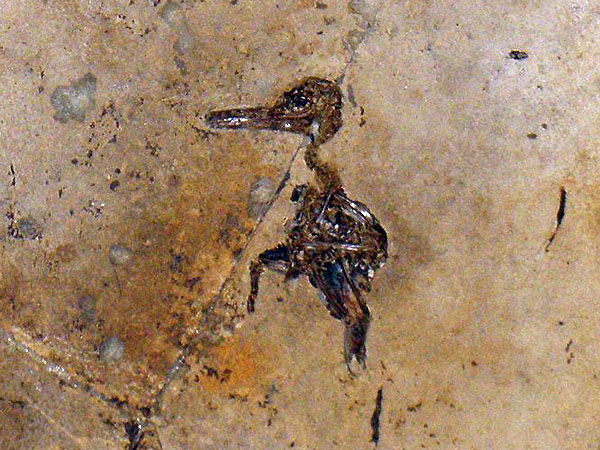
*********************

*********************
edited: 05.11.2019; 06.11.2019
This species was described in 2010, it is known from five or six specimens found in the Messel shale, five of which include cervical vertebrae which again all bear strange small tubercles unknown in any other bird dead or alive.
The bird may or may not be related to the so-called screamers (Anhimidae), it had a quite small head compared to its body and had very large and strong wing bones, thus apparently was good at flying, its feet have short toes which appear to have been somewhat flattened – and my gut feeling tells me that they may have had been webbed ….
*********************

*********************
edited: 07.08.2019
This species was described in 2017, it is one of the many birds from the Messel shale, that are somehow related to living ones but on the other hand again … are completely different.
This one is thought to be related to the Charadriiformes, and it may indeed have been a member of the jacana family (Jacanidae).
*********************

*********************
BTW: I only recently learned that the age of the Messel shale spans from the upper Early – to the lower Middle Eocene.
So not every bird from there is from the Middle Eocene.
*********************
edited: 04.08.2019
Alcmona-‘Vogel’ (Alcmonavis poeschli Rauhut, Tischlinger & Foth)
Diese Art, die gerade erst beschrieben wurde, ist nur anhand von Teilen der Flügel, bzw. eines Flügels, bekannt (siehe Foto).
***
Der ‘neue Vogel’ lebte in was vor 150 Millionen Jahren der so genannte Solnhofen-Archipel war, Seite an Seite mit den berühmten Archaeopterygidae, war aber offenbar nicht sehr nah mit diesen verwandt.
Die wenigen Knochen sind, zumindest für meine Augen, äußerlich denen von Archaeopteryx albersdoerferi Kundrát et al. und Wellnhoferia grandis Elżanowski oder vielleicht sogar Jeholornis prima Zhou & Zhang aus China ziemlich ähnlich; sie zeigen aber immerhin, dass dieses Tier besser ans Fliegen angepasst war als die zeitgleich existierenden ‘Urvögel’, darüber hinaus wird er aber, zumindest äußerlich, recht ähnlich ausgesehen haben.
***
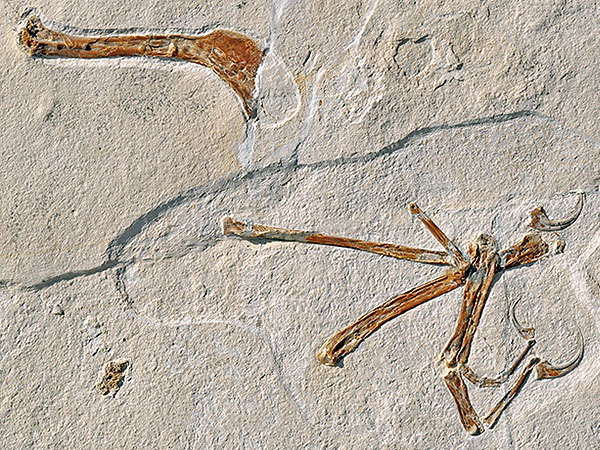
Bis jetzt wurden nur die Überreste eines einzigen Arms, bzw. Flügels gefunden – ich hoffe es werden weitere Funde folgen.
*********************
Quelle:
[1] Oliver W. M. Rauhut; Helmut Tischlinger; Christian Foth: A non-archaeopterygid avialan theropod from the Late Jurassic of southern Germany eLife DOI: 10.7554/eLife.43789.001. 2019
*********************
bearbeitet: 15.05.2019
Here we have the two species of finch-like passeriform birds that had been described at the beginning of this year, Eofringillirostrum boudreauxi and Eofringillirostrum parvulum, both from the Eocene, the first from North America, the second, smaller species from Europe.
***
Eofringillirostrum boudreauxi Mayr, Ksepka & Grande
This is the larger of the two known species, reaching about 10 cm in length, it also is the older one, having lived in the Early Eocene about 52 Million years ago in what today is Wyoming, USA.
This is what I call a pre-sketch, or a working sketch, it’s just the very first step in reconstructing a fossil bird, in which this particular species is drawn in a simple side-view, usually smaller than life-size.

Eofringillirostrum parvulum Mayr, Ksepka & Grande
This bird may have reached a length of only about 9 cm, it lived in the Middle Eocene of what today is the State of Hesse in Germany.
I sketched it together with a reconstructed infructescence of Volkeria messelensis Smith, Collinson et al., a plant from the family Cyperaceae that was growing around the Messel lake, and whose seeds may indeed have been eaten by this presumably seed-eating bird.
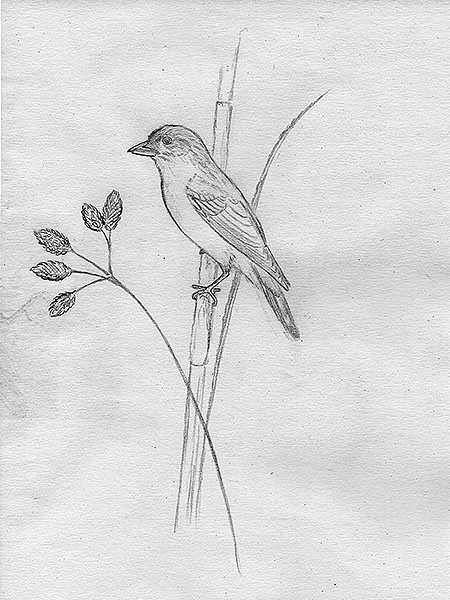
*********************
edited: 05-03.2019
Diese Art wurde 2008 beschrieben, so weit ich weiß anhand eines einzigen Knochens, eines vollständig erhaltenen rechten Tarsometatarsus, der immerhin der Überfamilie Certhioidea zugeordnet werden kann, nicht aber einer der rezenten Formen dieser Gruppe (Baumläufer, Mückenfänger, Zaunkönige)
Meiner Meinung nach ähnelt der einzige bekannte Knochen jedoch am ehesten dem entsrechenden Knochen eines Kleibers.
Der Vogel wird eine Gesamtgröße von etwa 15 cm erreicht haben, war also größer als die meisten Baumläufer und kleiner als ein durchschnittlicher Kleiber.
Es handelt sich hierbei tatsächlich um den (bis jetzt) ältesten bekannten echten Singvogel der in Europa gefunden wurde.
*********************
Referenzen:
[1] Albrecht Manegold: Earliest fossil record of the Certhioidea (treecreepers and allies) from the Early Miocene of Germany. Journal of Ornithology 149(2): 223-228. 2008

*********************
bearbeitet: 25.02.2019
… just some sketching, Hassiavis laticauda, a member of the Archaeotrogonidae, an extinct family that possibly belonged to the Caprimulgiformes or was closely related to that order.

*********************
edited: 20.02.2019
Pumiliornis means as much as “dwarf bird”, and with that, all has been said.
***
No, not so fast ….
The genus/species was described in 1999 and is, to my knowledge, so far known from three skeletal finds, of which one even contains the remains of its last meal, namely pollen.
All in all, Pumiliornis tessellatus resembled today’s sunbirds (Nectariniidae) or the sunbird-asitys (Eurylaimidae) in being very small and having an elongated beak. Its beak, however, was quite unlike those of the members of the beforementioned two families, it resembled the beak of a plover (Charadriidae), especially its narial opening (nose hole), which was rather slit-like and not round.
Pumiliornis was apparently a flower-visitor that fed on nectar and pollen (as is known from the content of the gut of one specimen), however, it may not have been specialized to that diet and may also have taken insects and other small invertebrates.

The bird was small, very small, in my reconstruction it reaches a length of only 7,5 cm, this size, however, is of course depending on the length of its tail feathers, which unfortunately are not preserved in any of the known specimens. I’ve reconstructed the bird with a rather short tail, which may some day turn out to be completely wrong, who knows.

The feet corresponded to the typical scheme of recent passerine birds, i.e. they have three toes pointed forward and one towards the back. However, the feet appear to have been facultative or semi-zygodactyl, which in turn means, in simple terms, the first toe usually pointed forwards, but could be held backward when needed.
***
The genus/species originally could not be assigned to any living bird family, not even an order, but is now known to belong to the extended Passeriformes-orbit, which in addition to the passerine birds also includes the falcons (Falconiformes) and the parrots (Psittaciformes). It is now known to have been a member of the extinct family Psittacopedidae Morsoravidae, that apparently also contains other unusual genera like Morsoravis, Psittacopes and the recently described, very interesting Eofringillirostrum and probably others too.
***
Finally, it should be mentioned that this bird was not a dwarf spoonbill, as claimed by a certain person. 😉
*********************
References:
[1] Gerald Mayr: Pumiliornis tessellatus n. gen. n. sp., a new enigmatic bird from the Middle Eocene of Grube Messel (Hessen, Germany). Courier Forschungsinstitut Senckenberg. 216: 75-83. 1999
[2] Daniel T. Ksepka; Lance Grande; Gerald Mayr: Oldest finch-beaked birds reveal parallel ecological radiations in the earliest evolution of Passerines. Current Biology 29: 1-7. 2019
*********************
edited: 08.02.2019

When this tiny creature was first described it was thought to represent some parent form of the parrot order, however, it later [1] was reinvestigated and is now placed near the Passeriformes … near them, not among or in between them!
My reconstruction is life sized, the bird here is nearly 12 cm long, the feathers, however, are not known, so are completely speculative!
*********************
References:
[1] Gerald Mayr: A reassessment of Eocene parrotlike fossils indicates a previously undetected radiation of zygodactyl stem group representatives of passerines (Passeriformes). Zoologica Scripta 44(6): 587–602. 2015
*********************
edited: 17.09.2018

*********************
bearbeitet: 11.07.2018
Rupelramphastoides knopfi Mayr
Nun, der Kopf scheint auch gefunden worden zu sein, offenbar an einem anderen Exemplar. Hier ist die Rekonstruktion nach dem Messen des Schädels.:
*********************

Es unterscheidet sich nicht wirklich so sehr von der vorherigen Version.:

*********************
Quellen:
[1] Gerald Mayr: A tiny barbet-like bird from the Lower Oligocene of Germany: the smallest species and earliest substantial fossil record of the Pici (woodpeckers and allies). The Auk 122(4): 1-9. 2005
[2] Gerald Mayr: Avian Evolution: The Fossil Record of Birds and its Paleobiological Significance. Wiley-Blackwell 2016
*********************
bearbeitet: 18.07.2017
Wenn meine Rekonstruktionsskizze zuverlässig ist, muss dieser Vogel eine Länge von etwa 10 bis 11 cm erreicht haben, dies ist in der Tat ziemlich klein.
Der Kopf ist jedoch bisher nicht bekannt.

*********************
Quelle:
[1] Gerald Mayr: A tiny barbet-like bird from the Lower Oligocene of Germany: the smallest species and earliest substantial fossil record of the Pici (woodpeckers and allies). The Auk 122(4): 1-9. 2005
*********************
bearbeitet: 16.06.2016